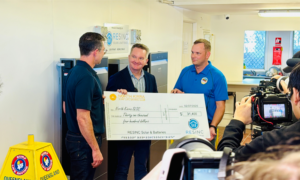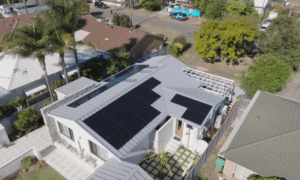The Australian National University recently announced a team of researchers successfully achieved a new world record for efficiency with ‘tandem solar cells’ – a new type of industry technology. These innovations use two types of modules to stack on top of each other, significantly increasing performance of the system overall.
Ultimately, the team believe that by layering these various types of cells on top of each other, there could be a higher chance of creating better efficiency for applications commercially and in common applications. Rolling these out over the next few years would also be somewhat easily achievable.
Located in Canberra, the ANU team experimented with conventional silicon solar cells that are typically used across current systems on the market. By layering a perovskite cell on top of the original silicon wafer, researchers were able to convert sunlight into electricity more effectively and productively.

How tandem solar cells work
Absorbing various parts of the spectrum of light, the two layers increase how much sunlight is turned into electricity overall. When they work together correctly, this means that the two cells can use more of the solar power available to reach the cells. But they both work at different light wavelengths.
Silicon solar cells that are commonplace on the market right now achieve an average conversion efficiency of around 20 per cent. Using these stacked perovskite-silicon variations, however, would potentially see an efficiency of 27.7 per cent. ANU’s researchers believe this could even hit higher than 30 per cent, as they set their sights on a bigger goal.
It is entirely likely that silicon cells could create up to 50 per cent more electricity by using the same volume of sunlight, compared to current models on the market.
Kylie Catchpole, an ANU professor, said the silicon variants dominate the market now, but this could very well change in the near future.
“The efficiency of silicon solar cells is going to reach the limit in the next five to 10 years,” she says. “This result demonstrates the potential of tandem solar cells. They can make better use of certain parts of the solar spectrum – for example, high energy blue photons.
“This will lead to more efficient and solar panel cost and solar energy sources.”
The team believes that these innovations will have a dramatic effect on the global market for systems like this. The first commercially available unit is expected to hit the market in the near future, possibly in the next few years.
Mass production of the tandem cells will kick off in 2023, as predicted by The International Technology Roadmap for Photovoltaics.











































